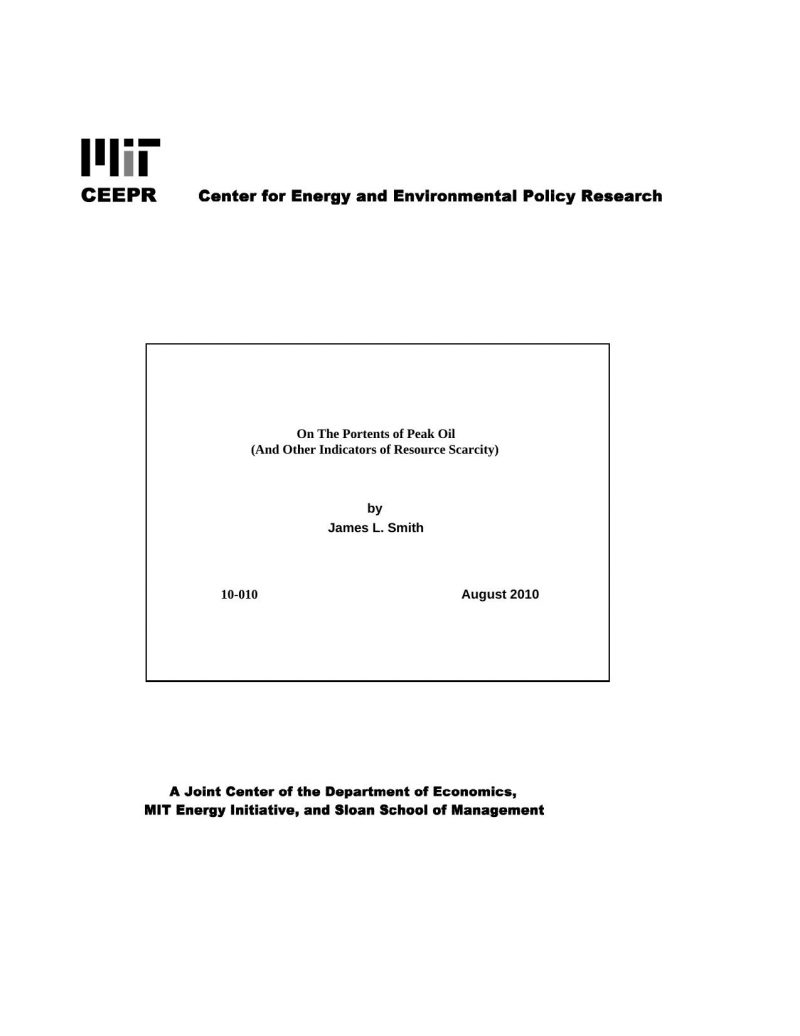On The Portents of Peak Oil (And Other Indicators of Resource Scarcity)
James L. Smith
10-Aug
Although economists have studied various indicators of resource scarcity (e.g., unit cost, resource rent, and market price), the phenomenon of “peaking” has largely been ignored due to its connection to non-economic theories of resource exhaustion (the Hubbert Curve). I take a somewhat different view, one that interprets peaking as a reflection of fundamental economic determinants of an intertemporal equilibrium. From that perspective, it is reasonable to ask whether the occurrence and timing of the peak reveals anything useful regarding the state of resource exhaustion. Accordingly, I examine peaking as an indicator of resource scarcity and compare its performance to the traditional economic indicators. I find the phenomenon of peaking to be an ambiguous indicator, at best. If someone announced that the peak would arrive earlier than expected, and you believed them, you would not know whether the news was good or bad. Unfortunately, the traditional economic indicators fare no better. Their movements are driven partially by long-term trends unrelated to changes in scarcity, and partially but inconsistently driven by actual changes in scarcity. Thus, the traditional indicators provide a signal that is garbled and unreliable.



